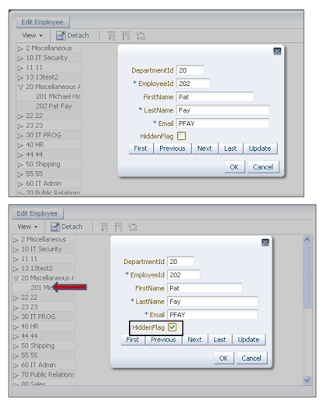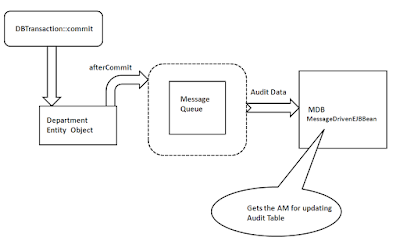Modifying the Application Module's JDBC DataSource at run time

In normal scenario, your Application Module(AM) may have a static JDBC data source configured and will be connected to the single data base in all conditions. However there are cases where the application may need to display data from different data bases based on user profile. In today's post, I talk about an example for the above use case. Well, this is not a new topic as such. In fact, this has been discussed previously many times. 1. Dynamic JDBC Credentials example by Steve Muench 2. How To Support Dynamic JDBC Credentials I'm copying the same solution in a slightly modified form ;) Programmatically setting DataSource for an Application Module A bit of theory before get in to the implementation. When a Fusion Web Page is getting rendered, UI controls may try to get data by evaluating the expression set for the value attribute. At this stage binding layer comes in to action, and will identify the underlying data provider(your Application Module) for the the speci...



